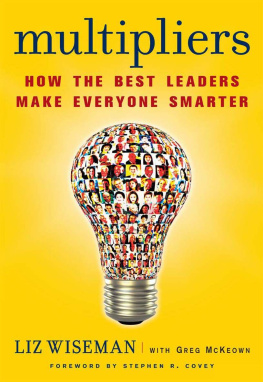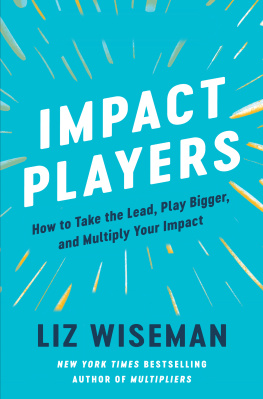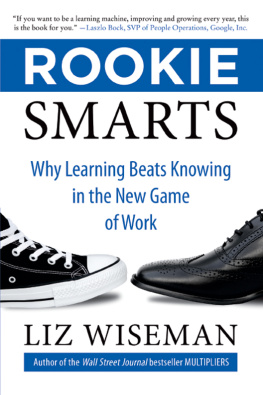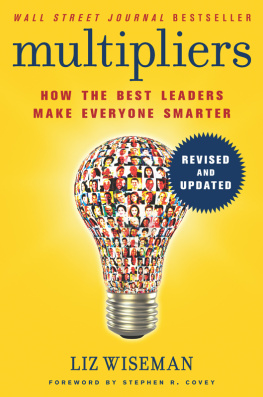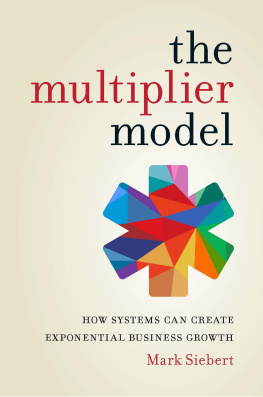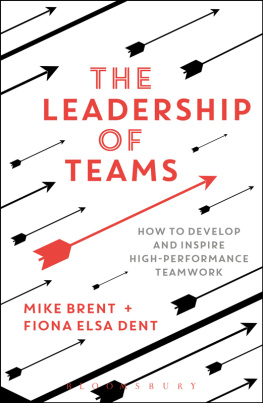THE
multiplier
EFFECT
THE
multiplier
EFFECT
TAPPING THE GENIUS INSIDE OUR SCHOOLS
LIZ WISEMAN | LOIS ALLEN | ELISE FOSTER
Foreword by CLAYTON CHRISTENSEN


FOR INFORMATION:
Corwin
A SAGE Company
2455 Teller Road
Thousand Oaks, California 91320
(800) 233-9936
www.corwin.com
SAGE Publications Ltd.
1 Olivers Yard
55 City Road
London EC1Y 1SP
United Kingdom
SAGE Publications India Pvt. Ltd.
B 1/I 1 Mohan Cooperative Industrial Area
Mathura Road, New Delhi 110 044
India
SAGE Publications Asia-Pacific Pte. Ltd.
3 Church Street
#10-04 Samsung Hub
Singapore 049483
Acquisitions Editor: Arnis Burvikovs
Associate Editor: Desire A Bartlett
Editorial Assistant: Mayan White
Production Editor: Laura Barrett
Copy Editor: Sarah J. Duffy
Typesetter: C&M Digitals (P) Ltd.
Proofreader: Stefanie Storholt
Indexer: Teddy Diggs
Cover Designer: Michael Dubowe
Permissions Editor: Jennifer Barron
Copyright 2013 by Elizabeth Wiseman
All rights reserved. When forms and sample documents are included, their use is authorized only by educators, local school sites, and/or noncommercial or nonprofit entities that have purchased the book. Except for that usage, no part of this book may be reproduced or utilized in any form or by any means, electronic or mechanical, including photocopying, recording, or by any information storage and retrieval system, without permission in writing from the publisher.
All trade names and trademarks recited, referenced, or reflected herein are the property of their respective owners who retain all rights thereto.
Printed in the United States of America
A catalog record of this book is available from the Library of Congress.
ISBN 978-1-4522-7189-7
This book is printed on acid-free paper.
13 14 15 16 17 10 9 8 7 6 5 4 3 2 1
Contents
Foreword
Clayton M. Christensen
Foreword
S hortly after The Innovators Dilemma was published in 1997, I spent some time with Andy Grove, the CEO of Intel. At the time, Cyrix and AMD were disrupting Intel with their low-cost microprocessors. As Grove quickly grasped the theories of disruptive innovation, he saw the threat materializing and understood what Intel would have to do to survive.
I was interested though that Grove didnt come out to the company and announce from on high a strategy for Intel. Instead he established an educational seminar during which Intels top 2,000 managersnot a small undertakingstudied the disruption model. As a result, Intel launched its Celeron chip at the bottom of its marketa disruptive strategy that was counter-intuitive to the common logic of how to make money at Intel. It was also very successful in fending off the would-be disruptors. Reflecting back on that history, Grove later told me, The disruption model didnt give us any answers. But it gave us a common language and a common way to frame the problem so that we could reach consensus around a counterintuitive course of action.
People often wonder that if disruption is going to occur, then does leadership matter? Indeed, the answer is that when disruption is afoot, nothing could be more important for an organization than its leadership.
Currently disruption is coming to education in the form of online learningand with it an historic opportunity to remake our schools from their factory-model roots into student-centric organizations that allow each child to realize her fullest human potential. As this disruption takes root and grows, leadership in shaping it in our schools will matter enormously.
In The Multiplier Effect, authors Liz Wiseman, Lois Allen and Elise Foster make a compelling case for a new, provocative approach to leadership in education. They ask the question, Do the smartest leaders create the smartest organizations or do the seemingly smartest leaders have a diminishing effect on the intelligence of others? They offer a model of leadership that recognizes that the critical leadership skill is not personal knowledge but the ability to tap into the knowledge of others. They reject the notion that a heroic leader, a lone innovator, or a single brain at the head of a school can solve our most complex problems. They explain why it takes more than just a genius to lead a school.
Successful leaders like Grove seem in many situations to understand how to harness the power of the people around them innately. In Groves case, through allowing his managers to learn and grow, together they were able to steer Intel forward and innovate successfully.
Thats the promise of Multipliers. They can help make an entire organization smarter and more effective. Amplifying the intelligence of the educators in a schoolto embolden them by placing them in teams with the autonomy to solve problems with new processesis critical as our schools are tasked with solving challenges for which they were not built.
Too often leaders grow frustrated with the ideas for innovation that reach their desk. They shout back at people in their organization for more innovative ideas, but what they dont see is that the problem is not with the people generating the ideas, but with the processes and priorities that exist within every single organization that morph and shape every idea to fit the capabilities of the organization instead of the original problem they were intended to solve. As a result of these processes and priorities, what comes out of the innovation funnel is me-too idea after me-too idea.
What this means is that if school leaders are to preside over schools and districts that continually innovate, then they need to shape actively these processes and priorities so they can leverage and unleashnot stiflethe strengths of their fellow educators.
The Multiplier Effect reminds us that we need to do more than innovate our classrooms. Based on three years of research and a study of over 400 educational leaders, it shows us how we need to rethink the model of leadership that will sustain innovation and deliver a more powerful and productive learning system. We need managers who go beyond just planning and executing; we need leaders who have a plan for their staff to learn and discover.
Ultimately we are all educators and learners. It shouldnt be so surprising that those schools and districts that remember and prize that might also have dramatic student successes to show for it. You can reinvent your school and create a multiplying culture. Remembering why we entered the profession of education in the first place and multiplying the leadership around us is a great place to start.
Clayton M. Christensen
Introduction
I ve always been a genius watcher, fascinated by the intelligence of others. When I began my career at Oracle Corporation, I landed in a rich stew of brilliant and interesting people. I was happy to rub shoulders with my new colleagues, hoping something would wear off on me; after all, I was voted class clown of my high school.
During my 17-year career at Oracle (where I got thrown into management at 24 years old and found myself running the corporate university), I worked closely with the senior executives, all of whom were brilliant. I saw how some leaders literally shut down brainpower in people around them, yet other leaders seemed to amplify the intelligence around them. I wondered why these smart leaders couldnt look beyond their own capacity to see and use the full capability on their teams. I could see there was more intelligence inside the organization than we were using. I suspected that there were smart, underutilized people across organizations everywhere.
Next page

